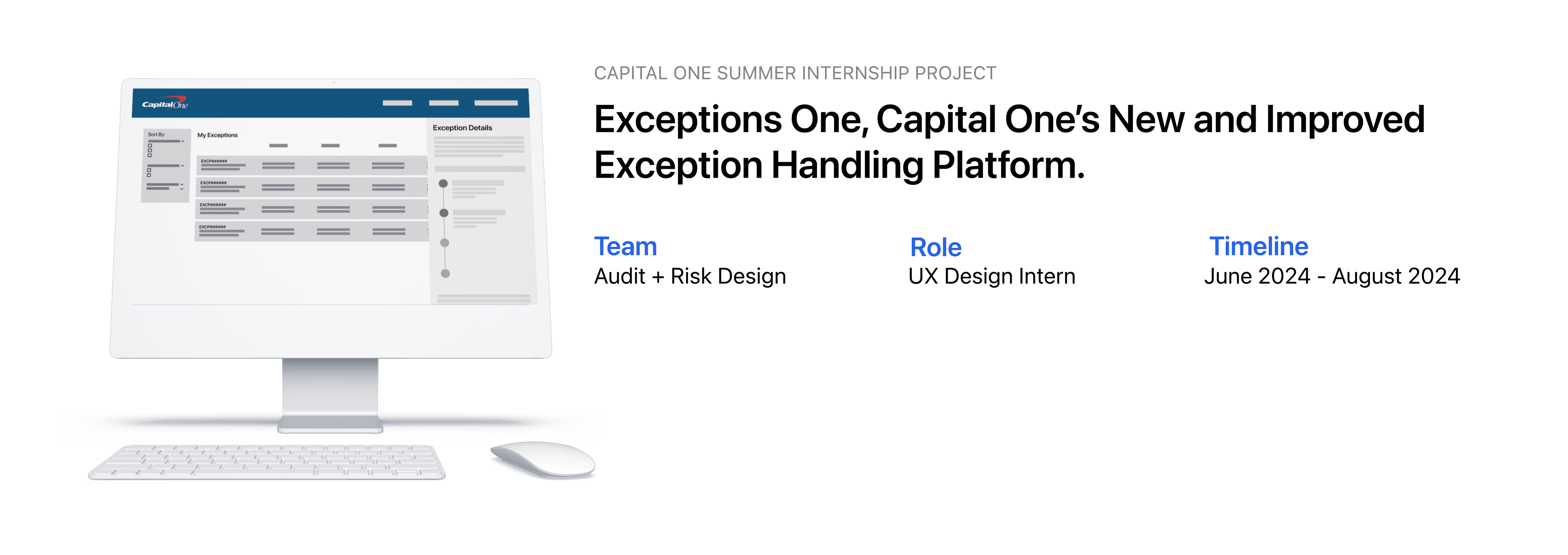






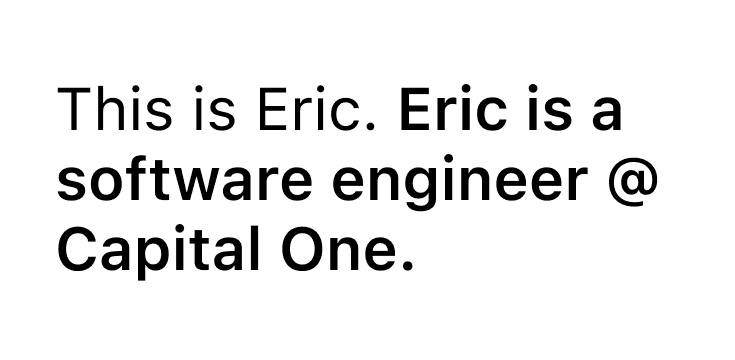
This is Eric. Eric is a developer at Capital One.
Eric creates an exception to get an extension on his work to remediate vulnerabilities.





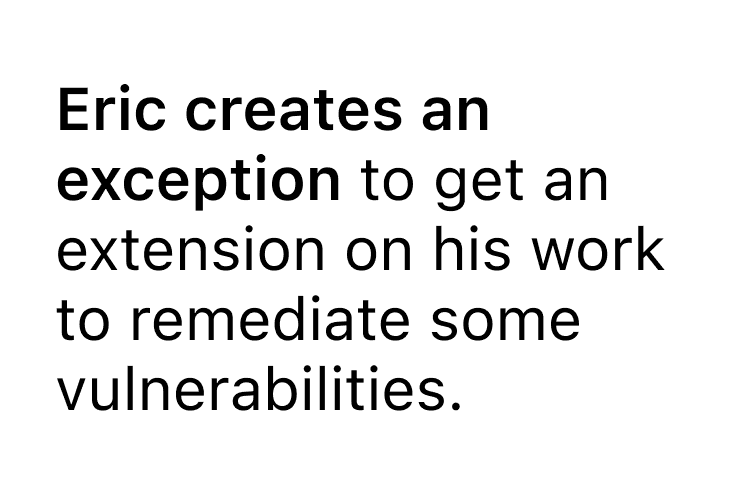

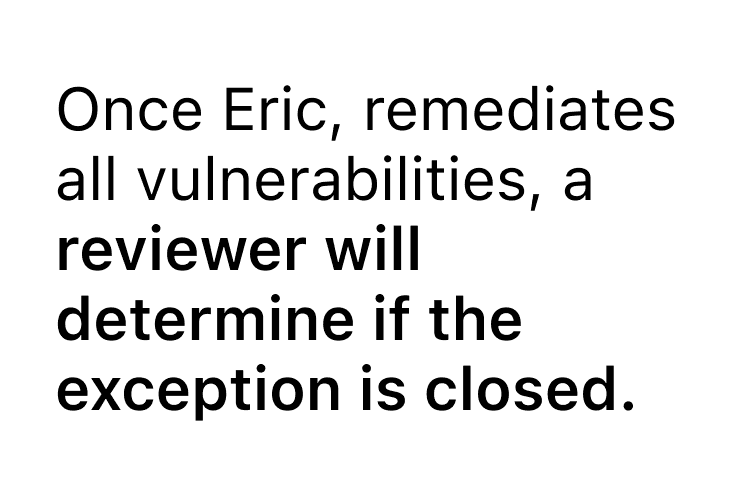


Once Eric remediates vulnerabilities, a reviewer will determine if the exception is closed.
The exception is closed and Eric's project is finished. It follows all company policies, standards, and procedures.




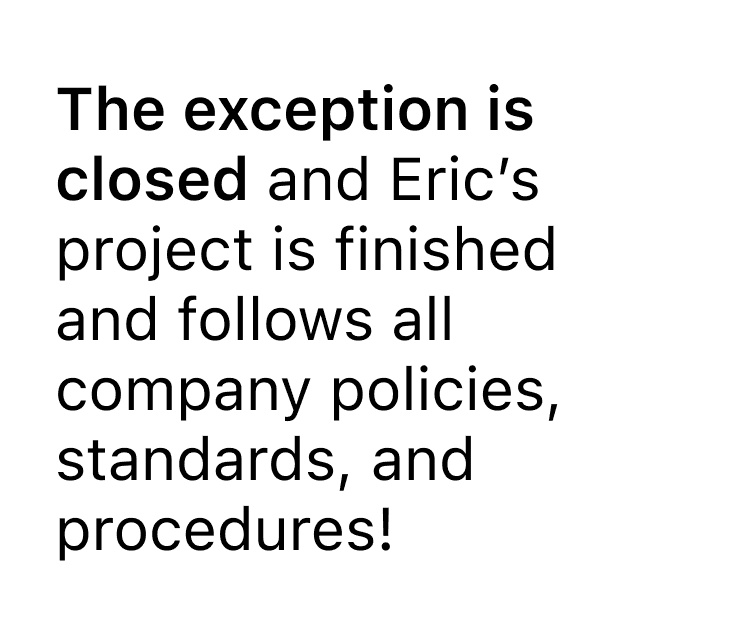
PAINPOINTS
Capital One Associates Struggled to Navigate ServiceNow's Interface
I asked requester and reviewers at Capital One for key pain-points in Service Now's interface.
USER JOURNEYS
Defining Clear Paths ExceptionsOne
We created 3 paths: Requester, Reviewer, Revision. We also created a reassignment case to remediate pain-points with reassigning reviewers and requesters.
Requester: journey the requester makes to submit close request.
Reviewer: journey the reviewer takes to review the request and approve or deny request.
Revision: If the reviewer denies the request, they must send back comments to the requester who must resbumit the exception request w/ revisions.
HIGH-FIDELITY
Ready for MVP Launch 🚀
To create the high-fidelity prototype, I used auto-layout to create pixel perfect images for tech hand-off. Most of the components I inherited from previous designs, and the Cap 1 Design system. I was not able to upload the high-fidelity images due to NDA constraints. I redesigned the high-fidelity images myself.
HIGH-FIDELITY
Ready for MVP Launch 🚀
To create the high-fidelity prototype, I used auto-layout to create pixel perfect images for tech hand-off. Most of the components I inherited from previous designs, and the Cap 1 Design system. I was not able to upload the high-fidelity images due to NDA constraints. I redesigned the high-fidelity images myself.





Unresolved exceptions often lead to redo-ing the entire exceptions process, increasing task completion time by 70%.











LOW-FIDELITY STAGE
Balancing User Needs and Business Needs
Checks and balances is the principle of the government under which separate brances are empowered to prevent actions by other branches and are induced to share power. In the scope of this project, it's a way to make sure that our solution isn't too heavily focused on design, tech, or risk. To navigate this idea, I created this venn diagram.
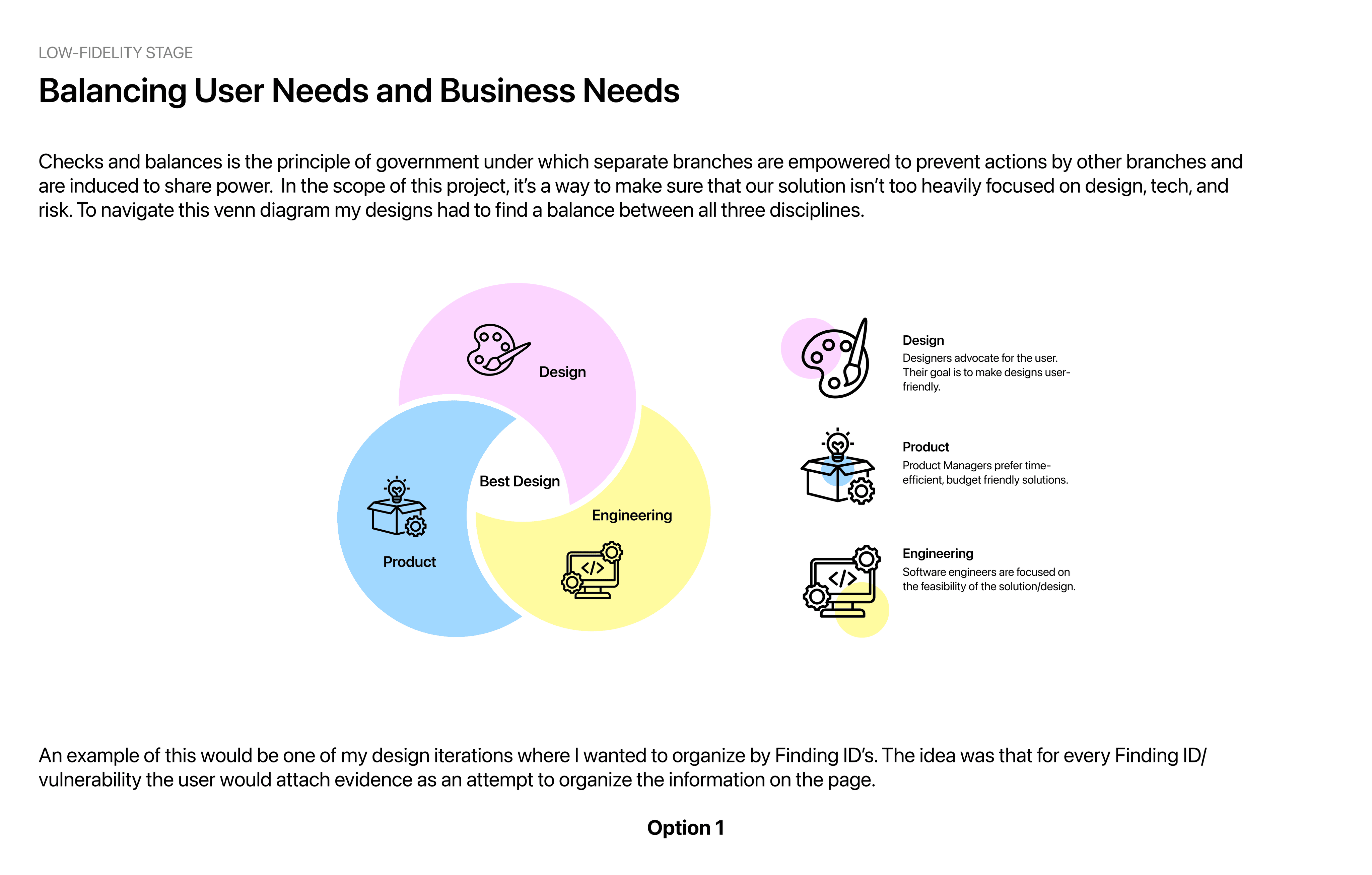

IMPACT
Seamless Operations Start with ExceptionsOne.
During the usability stage, I had the opportunity to test my designs. Were the assumptions I made correct?
Our team received an abundance of positive feedback. Improving the ServiceNow experience with Capital One's new platform, ExceptionsOne, enables Capital One associates to manage risk cases faster and more efficiently, thereby reducing the margin of error and protecting the company from potential threats. Here are some quests from associates trying ExceptionsOne.
CONSTRAINTS
Turning MVP Constraints into Opportunities.
With a MVP launch in the Fall of 2024, I had 10 weeks to completely integrate my design into Exceptions One with little to none budget and time. While this makes design opportunities limited, especially at the research stage, with little to no budget/time for proper market research. While I did work hard on my designs, because closure was a very small portion of Exceptions One, the cheapest and fastest design was chosen. This did not stop me from coming up with multiple solutions and I am grateful for the opportunity to own the closure design. In addition, the designs have been recreated on my website due to NDA constraints.
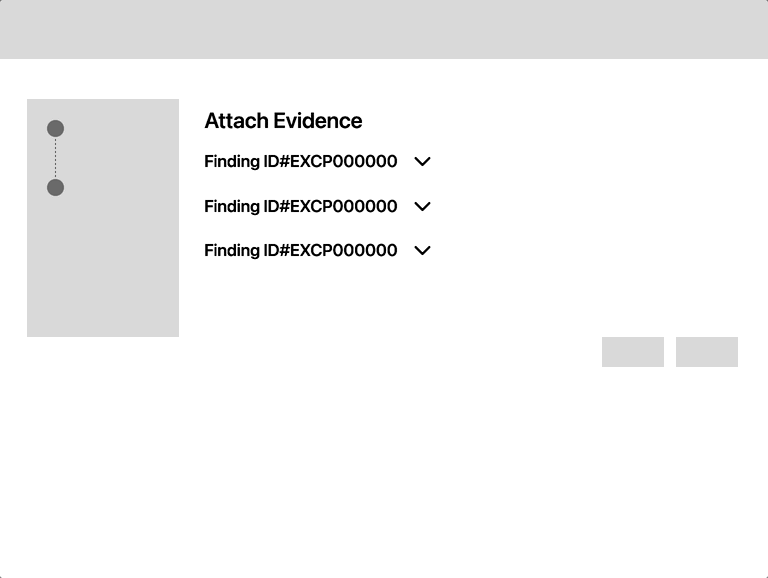

An example of this would be one of my design iterations where I wanted to organize by Finding ID’s. The idea was that for every Finding ID/vulnerability the user would attach evidence as an attempt to organize information on the page.
While it was a good idea in theory, the product said that it would be harder from a tech perspective, and governance said it was too UTEP specific, and would impede the future onboarding of other PSP’s. To navigate this challenge, I presented different design ideas to both product and governance. Coming to the table with multiple options helped me negotiate solutions that put the user first. In this example, I created 3 options.
Although Options 1 and 3 were most usable and also time and cost efficient, Option 2 was chosen. Closure is the last stage of the exceptions process and also the simplest in structure. As a result, stakeholders were most concerned about finishing closure and handing off to the engineering team to meet the MVP deadline. Option 1 and 3 have been saved by the Exceptions One design team as ideas for post-MVP releases.




Option 1
Option 2
Option 3


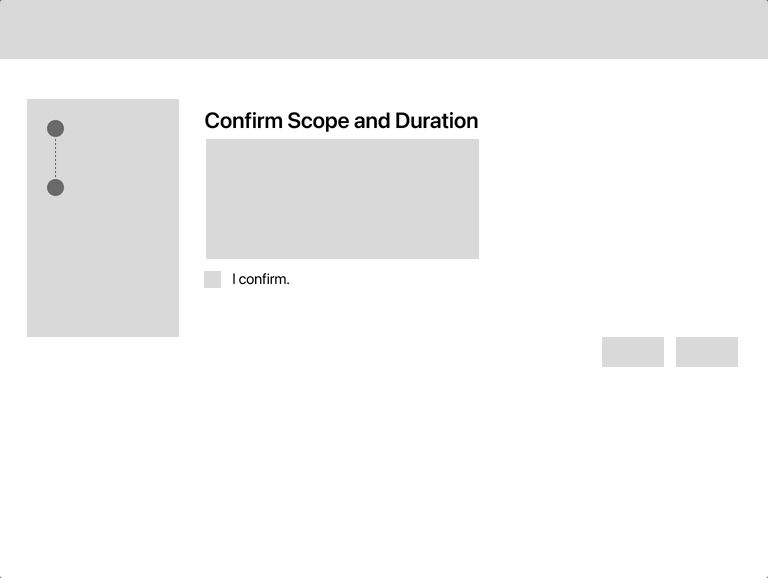






From Tabs to Toggles
Instead of switching tabs and scrolling, I created a toggle component to keep information organized and on the same page.
Getting it Right on the First Try
When requesters don't upload necessary information, task completion times increase. With a guided process, we can make sure requesters include necessary details for reviewers.
































Accidentally started Renewal or Closure?
If a reviewer accidentally starts the renewal or closure process, We've ensure
Updated Navigation for Dead-end Pages
Reassignment
When an associate who is a requester or reviewer leaves the company, we've ensured the exception stays resolved.







